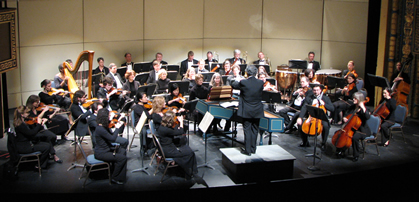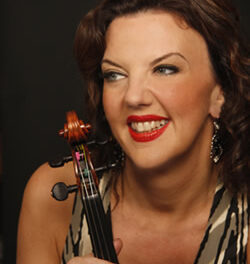The Chamber Orchestra of the Triangle, under the leadership of Lorenzo Muti, wrapped up their 2015-16 concert season at the Carolina Theatre with a program titled “A Surprise from the Classical Period.” The three works provided a most pleasant repast on this lovely spring afternoon.
The opening selection – the appetizer, if you will – was the Symphony in D by Juan Crisóstomo Arriago (1806-1826). He was born in Spain, studied at the Paris Conservatoire, and wrote music mostly in the Viennese classical style. He died short of his 20th birthday due to exhaustion and a lung infection, but left a prodigious amount of music (much of it lost), and a sterling reputation. The four-movement Symphony in D, one of his last works, is scored similarly to Beethoven’s early symphonies. Though not a masterpiece, it is a well-shaped and delightful work with hints of more to come. A moment of extraordinary beauty in the Andante movement caught my attention and stuck in my memory; a warm melody emerged from the celli and then was repeated by the flutes alone, and it was gorgeous. Under Muti’s firm and sure hand the COT played the work with crisp precision and the high classical style for which they are well known.
The salad course of the concert was Mozart’s Sinfonia Concertante for Four Winds in E-flat, K.297b featuring Anna Lampidis – oboe, Kevin Streich – clarinet, Christopher Ulffers – bassoon, and Andrew McAfee – French horn. This work, in its present form, is of doubtful authenticity. It is believed that Mozart may have written a piece for four highly esteemed wind players (flute, oboe, horn and bassoon) while in Paris in 1777. However, nowhere is this piece ever mentioned in Mozart’s correspondence or writings. It is presumed that a 19th-century arranger who had Mozart’s original instrumental parts added the orchestral parts and transposed the flute part for clarinet.
“So what?” said Muti in his introductory remarks about this piece. “I don’t care. I love this piece, and it has Mozart’s gift of melody, so let’s enjoy it.” The opening movement was Mozartian charm in all its glory, with a cadenza just before the end displaying the technical and musical skills of the four soloists. The second movement, marked Adagio, was a warm and beautiful display of Mozart elegance. The closing movement, Andante con variazioni, surely was Mozart having fun. It consists of ten variations on what sounds like a rustic dance. The soloists each performed masterfully as individuals and superbly as ensemble.
After an intermission, we were served the entrée: Beethoven’s graceful Symphony No. 4 in B-flat, Op. 60. It was Robert Schumann that referred to this symphony as “a slender Greek maiden between two Norse giants” (i.e. the imposing 3rd and 5th). This symphony retains the classical forms and style of Beethoven’s youth. It does not have the pathos of the Third nor the edgy rage of the Fifth, but there is that feeling that anything can happen, including the opposite of what has gone before, and that whatever happens is absolutely right. After a slow and almost ominous introduction that includes some fascinating Beethoven inventiveness, the music takes off in a joyous romp. The Adagio is an expressive and relaxed rondo in E-flat. The third movement (Allegro vivace) combines elements of Scherzo and Minuet and has the trio section played twice, which creates a five-part structure instead of the usual three-part form. The Symphony concludes with a dazzling perpetual motion Allegro, ma non troppo that nods to Haydn. This performance seemed to express the enthusiasm and pleasure of the orchestra which passed it on to the audience.
My guess is the surprise from the Classical period referred to in the title was the “Arriaga” Symphony. It was no surprise that the COT and Muti provided a program to delight the audience and a performance that matched their reputation as one of the finest professional ensembles in North Carolina and the southeast.
Oh yes; for desert we were treated to a reprise of the 4th movement of the Beethoven Symphony. Somehow it seemed even brighter and more vivacious than it did the first time, and it was delicious. Next season will offer more of this appetizing fare.












